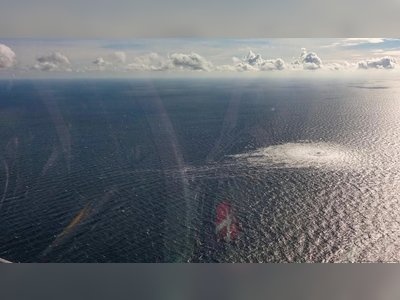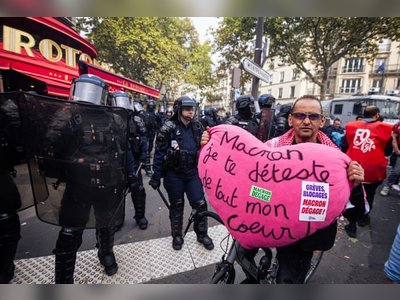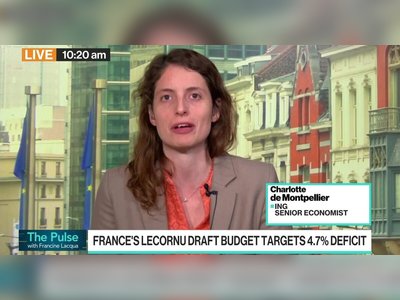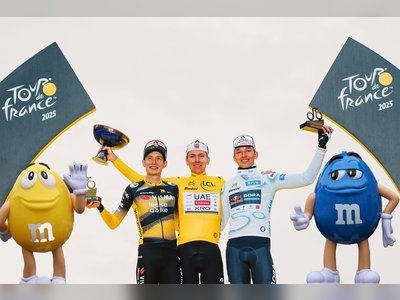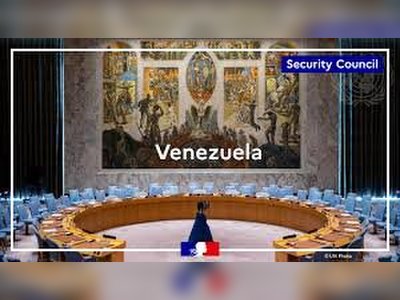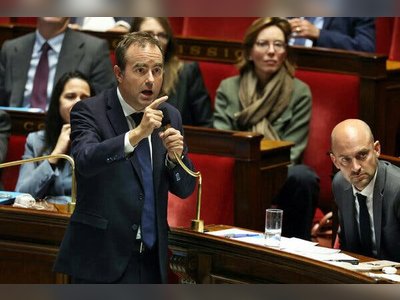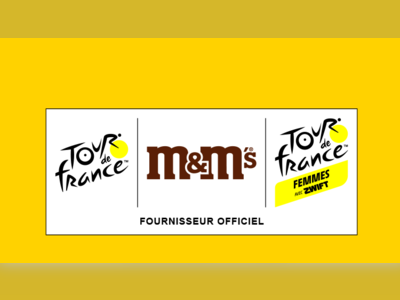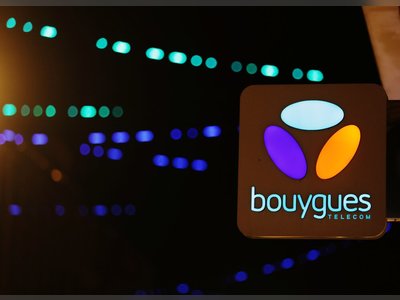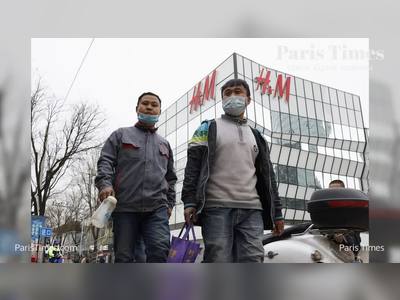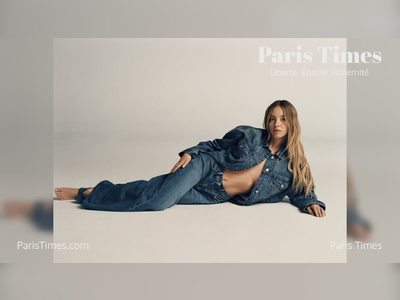Emmanuel Perrotin: Pioneering Art-Luxury Hybridization
A look at the innovative strategies of the renowned gallery owner and the implications of private equity in the art sector.
Emmanuel Perrotin, a prominent figure in the art world, has taken the concept of hybridization to new heights, merging the realms of luxury and art in a manner that reinvigorates traditional boundaries.
This interplay began prominently in 2003 when Takashi Murakami infused his distinctive aesthetic, influenced by Japanese tradition, pop culture, and sci-fi, into luxury items for Louis Vuitton.
This collaboration achieved immense success and is set for reissue in 2025. Following in Murakami's footsteps, notable artists such as Richard Prince, Damien Hirst, Cindy Sherman, Yayoi Kusama, and Jeff Koons have engaged in similar projects, drawing inspiration from masters like Piet Mondrian and Andy Warhol.
In May 2023, Perrotin embarked on a new artistic fusion, sealing a strategic partnership with Colony Investment Management after two years of negotiation.
This partnership marks a novel intersection of art, luxury, and private equity, reflecting a globalized clientele seeking a shared symbolic capital across continents.
Frédéric Gonand, an expert from Dauphine University and the School of the Louvre, highlighted the complexity of merging the rationality of shareholder interests and high return expectations with the inherent unpredictability of creative endeavors.
Amidst the masterpieces, new business models are emerging.
Experts suggest that international expansion and the development of e-galleries require significant financial resources.
The design of retail spaces selling luxury items co-created by 'artist-brands' could present a profitable strategy through 'boutique-galleries'.
Perrotin has expressed his intention to reinvent the gallery model while maintaining his dedication to supporting artists over his thirty-five-year career.
A potential synergy between the luxury and art sectors is driven by shared clientele.
Brands and designers seek to collaborate with artists to enhance their cultural depth and narrative, making such alliances appealing yet strategically selective from the perspective of galleries.
Notably, Murakami's collaborations enable him to reach broader audiences while being intricately involved in these partnerships, bolstering both his artistic practice and market presence.
The current state of the art market, amidst global uncertainties, poses challenges; however, it has also spurred resilience and new opportunities for growth.
Perrotin reports successful openings of new spaces in prominent locations, further underpinning confidence in their artists and market positioning.
The recent establishment of a gallery in Dubai reflects the city's growing significance as an international art hub, supported by a burgeoning community of enthusiastic collectors.
With few international galleries currently present, this expansion signifies a strategic meeting point for new audiences and long-standing cultural engagements.
Engaging potential art buyers from a luxury background may foster a distinctly open-minded market environment.
The diverse demographics of Dubai's population, alongside the drive from local institutions and private entities to structurally enhance the local art ecosystem, form the basis of emerging dialogues and exchanges.
Innovation within the Perrotin brand remains central; the artist's collective donation to the Centre Pompidou exemplifies a commitment to evolving gallery practices.
The donation of twenty-three artworks highlights a strategic approach to broaden representation within museum collections, addressing previous gaps due to limited acquisition budgets.
In recent years, Perrotin has diversified its operations to include an extensive publishing initiative, producing exhibition catalogues and artist books through Perrotin Editions.
This endeavor includes the establishment of retail outlets in cities such as Paris, New York, Seoul, Tokyo, Shanghai, and London, as well as temporary sales locations across Asia.
Pop-up events have also showcased available editions, enhancing audience engagement and visibility.
The collaboration with the Bellagio Resort & Casino in Las Vegas has further expanded Perrotin’s promotional outreach.
The partnership with Colony Investment Management introduces a significant evolution within the gallery's operational model.
Perrotin, having founded the gallery at a young age, recognizes the necessity of adapting its structure to support sustainable growth, enhancing services for artists, and fostering international outreach while retaining his core mission of artistic support.
Perrotin envisions a gallery framework that operates through multiple locations, optimizing resource sharing and minimizing ecological impact, as demonstrated through recent collaborations across geographic offices during major art fairs.
The gallery's evolution reflects an adaptive strategy to growth, driven by a foundational belief in collaborative risk-sharing.
Perrotin emphasizes the importance of surrounding himself with professionals to elevate both the gallery's profile and the support provided to its artists.
This interplay began prominently in 2003 when Takashi Murakami infused his distinctive aesthetic, influenced by Japanese tradition, pop culture, and sci-fi, into luxury items for Louis Vuitton.
This collaboration achieved immense success and is set for reissue in 2025. Following in Murakami's footsteps, notable artists such as Richard Prince, Damien Hirst, Cindy Sherman, Yayoi Kusama, and Jeff Koons have engaged in similar projects, drawing inspiration from masters like Piet Mondrian and Andy Warhol.
In May 2023, Perrotin embarked on a new artistic fusion, sealing a strategic partnership with Colony Investment Management after two years of negotiation.
This partnership marks a novel intersection of art, luxury, and private equity, reflecting a globalized clientele seeking a shared symbolic capital across continents.
Frédéric Gonand, an expert from Dauphine University and the School of the Louvre, highlighted the complexity of merging the rationality of shareholder interests and high return expectations with the inherent unpredictability of creative endeavors.
Amidst the masterpieces, new business models are emerging.
Experts suggest that international expansion and the development of e-galleries require significant financial resources.
The design of retail spaces selling luxury items co-created by 'artist-brands' could present a profitable strategy through 'boutique-galleries'.
Perrotin has expressed his intention to reinvent the gallery model while maintaining his dedication to supporting artists over his thirty-five-year career.
A potential synergy between the luxury and art sectors is driven by shared clientele.
Brands and designers seek to collaborate with artists to enhance their cultural depth and narrative, making such alliances appealing yet strategically selective from the perspective of galleries.
Notably, Murakami's collaborations enable him to reach broader audiences while being intricately involved in these partnerships, bolstering both his artistic practice and market presence.
The current state of the art market, amidst global uncertainties, poses challenges; however, it has also spurred resilience and new opportunities for growth.
Perrotin reports successful openings of new spaces in prominent locations, further underpinning confidence in their artists and market positioning.
The recent establishment of a gallery in Dubai reflects the city's growing significance as an international art hub, supported by a burgeoning community of enthusiastic collectors.
With few international galleries currently present, this expansion signifies a strategic meeting point for new audiences and long-standing cultural engagements.
Engaging potential art buyers from a luxury background may foster a distinctly open-minded market environment.
The diverse demographics of Dubai's population, alongside the drive from local institutions and private entities to structurally enhance the local art ecosystem, form the basis of emerging dialogues and exchanges.
Innovation within the Perrotin brand remains central; the artist's collective donation to the Centre Pompidou exemplifies a commitment to evolving gallery practices.
The donation of twenty-three artworks highlights a strategic approach to broaden representation within museum collections, addressing previous gaps due to limited acquisition budgets.
In recent years, Perrotin has diversified its operations to include an extensive publishing initiative, producing exhibition catalogues and artist books through Perrotin Editions.
This endeavor includes the establishment of retail outlets in cities such as Paris, New York, Seoul, Tokyo, Shanghai, and London, as well as temporary sales locations across Asia.
Pop-up events have also showcased available editions, enhancing audience engagement and visibility.
The collaboration with the Bellagio Resort & Casino in Las Vegas has further expanded Perrotin’s promotional outreach.
The partnership with Colony Investment Management introduces a significant evolution within the gallery's operational model.
Perrotin, having founded the gallery at a young age, recognizes the necessity of adapting its structure to support sustainable growth, enhancing services for artists, and fostering international outreach while retaining his core mission of artistic support.
Perrotin envisions a gallery framework that operates through multiple locations, optimizing resource sharing and minimizing ecological impact, as demonstrated through recent collaborations across geographic offices during major art fairs.
The gallery's evolution reflects an adaptive strategy to growth, driven by a foundational belief in collaborative risk-sharing.
Perrotin emphasizes the importance of surrounding himself with professionals to elevate both the gallery's profile and the support provided to its artists.
